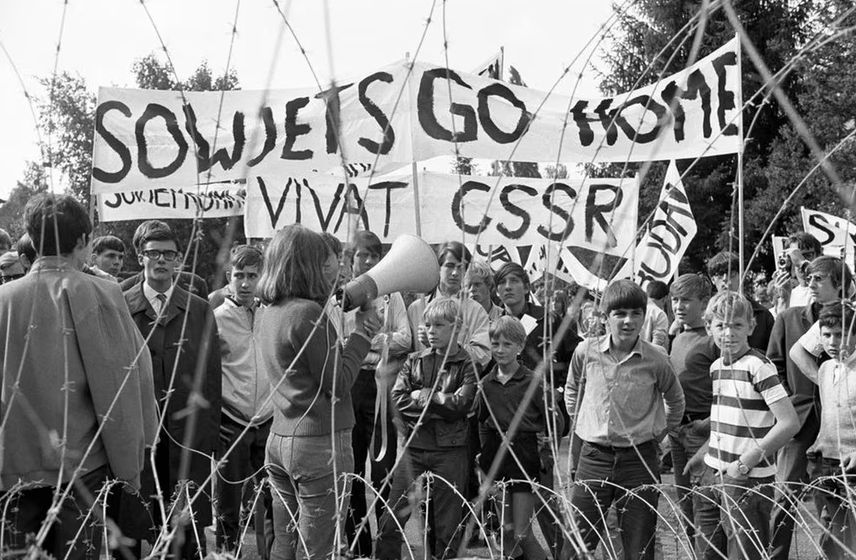Created on May 14, 1955, the Warsaw Pact —also known as the Treaty of Friendship, Co-operation, and Mutual Assistance— was a collective of Eastern European countries prompted by West Germany joining NATO in the Paris Agreement in May 1955. These entities became known as the Soviet “Eastern Bloc” and NATO’s “Western Bloc”.
This joint “defense” treaty established by the Soviet Union included seven Soviet Satellite states including Bulgaria, Czechoslovakia, East Germany, Hungary, Poland, Romania, and Albania, who withdrew in 1968.
Each country pledged to defend all parties against attacks from external countries but emphasized non-interference in internal affairs.
For the Soviet Union, there was the additional advantage of an enhanced bargaining position with NATO’s Western Bloc.
The pact was formed with the intention of being a “communal decision-making” style but the Soviet Union had the ultimate authority from the beginning. Using the treaty to control dissent in satellite states, the Soviet Union often invaded and occupied countries it felt were losing control, such as Hungary in 1956, Czechoslovakia in 1968, and Poland in 1981.
On August 20, 1968, approximately 200,000 Pact troops and 5,000 tanks invaded Czechoslovakia to crush the political liberation of Prague Spring and force the repeal of Normalization.
Radio stations had become a popular platform for the discussion of politics, particularly with Czechoslovak youths. During the invasion, stations encouraged non-violent action to be taken to the streets. Public protests quickly began with demonstrations and non-violent tactics across the country. Protesters soon began tearing down street signs to confuse the invading army on its march. Met with the demand to surrender control of their broadcasts, many television and radio stations refused to turn over power to the Soviets, leading to the death of at least 20 people. Some stations were able to move their broadcasts to underground locations where they spread the news of the Soviet’s takeover and encouraged further passive rebellion.
Czechoslovak officials were then detained and taken to Moscow, where they were later removed from office and replaced with “realist” officials. Many foreign nations condemned the invasion, including China, Yugoslavia, and Romania. However, no international action was taken.
In the 80s, the treaty was riddled with problems because of the economic slowdown in the Eastern Bloc. By the late 80s, Political change in satellite countries made the pact virtually useless. The Warsaw Pact formally ended on July 1, 1991.
Written by Kelsey McDade
NATO, ‘What was the Warsaw Pact?’, North Atlantic Treaty Organization, https://www.nato.int/cps/en/natohq/declassified_138294.htm#:~:text=The%20Warsaw%20Pact%20was%20a,(Albania%20withdrew%20in%201968), (Accessed on August 22, 2023).
Office of the Historian, ‘The Warsaw Treaty Organization, 1955’, Department of States, https://history.state.gov/milestones/1953-1960/warsaw-treaty, (Accessed on August 22, 2023).
Augustyn, Adam, ‘Warsaw Pact’, Britannica, 2023, https://www.britannica.com/event/Warsaw-Pact, (Accessed on August 22, 2023).
Editors of History, The, ‘Soviets invade Czechoslovakia’, HISTORY, A&E Television Networks, 2019, https://www.history.com/this-day-in-history/soviets-invade-czechoslovakia, (Accessed on August 22, 2023).
Updegraff, Jillian E. (2022) "Radio and Rebellion: An Investigation of Radio and Its Use by Czechoslovakian Youth During the 1968 August Invasion," Swarthmore Undergraduate History Journal: 3 (2), 106-132. https://works.swarthmore.edu/suhj/vol3/iss2/7, (Accessed on September 6, 2023).



